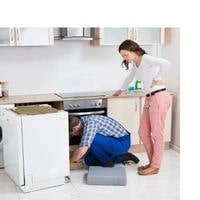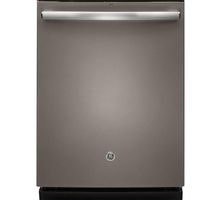GE dishwasher not filling with water. If the dishwasher is not filling with water, To resolve this issue, there are a few simple steps you can take.
The possible thing you should do is to ensure that the dishwasher door has been shut after loading it up with dirty dishes before starting the wash cycle.
Another possibility for a GE dishwasher not filling with water is an obstruction within the plumbing system that’s preventing clean water from reaching your appliance.
If you’re unsure about why there’s no water coming in during a wash cycle, it may be due to something as simple as a clogged hose in your plumbing system that’s built up with dirt or sediment and preventing clean running water from getting through to your appliance.
GE dishwasher not filling with water

Here we will discuss some common issues and solutions for GE dishwashers not filling with water.
Faults In Float Assembly
As your dishwasher fills, a float rises and at a predetermined level stops the flow of water.
If the float gets stuck in this position, it can prevent water from filling your dishwasher.
Check your float assembly to find out if there is anything obstructing the float from moving freely. Replace the assembly if a repair can’t be made quickly and easily.
Water Inlet Valve Failure
Just like your dishwasher can’t fill with water if its water valve is broken or leaking, it won’t operate correctly if the valve has debris on the screens.
One way to address this issue is by accessing the inside of it and cleaning out the debris.
If this does not solve the problem, you might want to consider replacing your water inlet valve as part of a more significant repair since water leaks and blockages are one of the most common reasons for dishwasher malfunctions.
Defective Drain Valve
If your dishwasher is not filling up with water, the reason may be that there’s nothing left to fill it with.
First, take off the cover of the external water supply you are using to fill your dishwasher and check to see if there is a kink in your hose or if the hose has been detached from its source.
If you find no problem with the hose attachment or length, then replace your drain valve by removing the screws and replacing it properly.
Faulty Float Switch
The float switch regulates the water level in the dishwasher so that it will not overflow. If the float switch is stuck or defective, it might accidentally allow too much water into the dishwasher and result in a flood.
When replacing a broken float switch, one should make sure they find out what type they need in order to match up all the correct wires and plumbing connections.
Replacing it incorrectly can cause a lot of damage down the road that may be more expensive to fix than simply buying a new float switch would have been, so care should be taken when inspecting this part after noticing that it’s malfunctioning.
Water Supply Failure
The dishwasher is failing to fill with water. Please increase the pressure in the house and inspect for possible blockages in the Waterline valve.
It’s important to ensure that the dishwasher is receiving enough water (at least 20 psi) at the input of this water line valve.
These solutions should allow for proper water flow into the dishwasher if the clog is not contributing to missing or reduced flow.
FAQs
On dishwashers, where is the water inlet valve?
Dishwasher water inlets should be located near the dishwasher. It should be found behind either the lower kickplate panel in either the left or right corner of your appliance.
The valve may have two screws on top of the panel and some others underneath it too.
Related Guides
